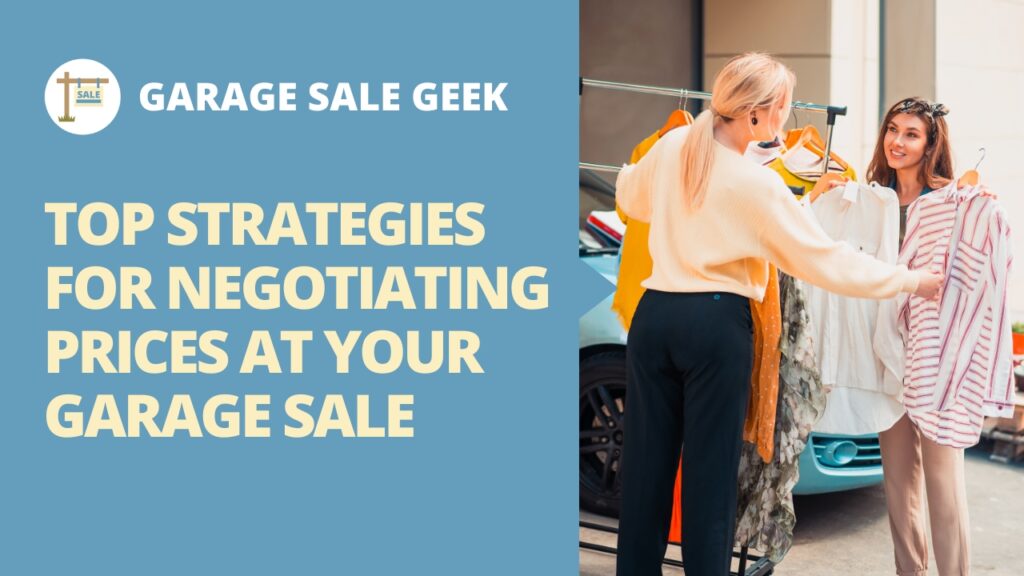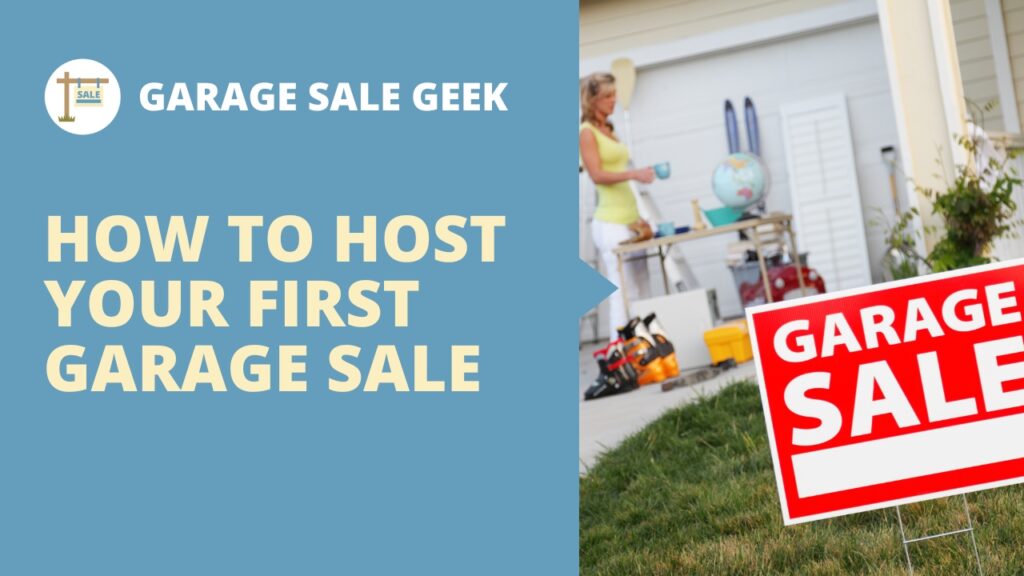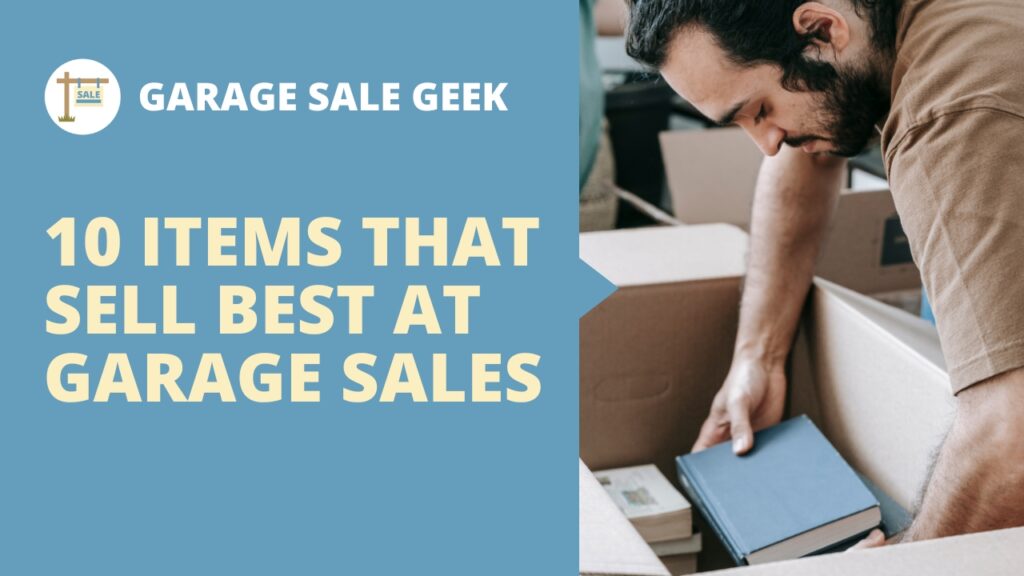
Garage sales are a fantastic way to declutter and make some extra cash. But let’s face it, the real art lies in haggling with buyers to get the best price for your treasures. I’ve mastered the dance of negotiation, and I’m here to share my top strategies to ensure you don’t leave money on the table.
Knowing how to negotiate effectively can mean the difference between a successful sale and a driveway full of unsold items. I’ll guide you through the psychology of pricing and the verbal cues that can help you read your buyers like an open book. Stick with me, and you’ll be wheeling and dealing like a pro in no time.
Assessing the Value of Your Items
When hosting a garage sale, knowing the worth of what’s spread out on your lawn is my secret sauce for successful haggling. Before those early birds start circling, I like to have a crystal-clear idea of each item’s value. This not only anchors my pricing strategy but also prepares me for the myriad of offers that will come my way.
I always start by doing some good old-fashioned homework. I’ll sift through eBay, Craigslist, and local thrift stores to gauge what similar items are going for. Noteworthy differences can reflect the current demand, which is vital for my yard sale pricing. I’ve learned that the original price isn’t the be-all and end-all—what buyers are willing to pay now is what really matters.
Here are some tips I use for valuation:
- Condition matters: Nearly-new items can fetch a higher price tag, while well-loved ones might need to be let go for less.
- Rarity and demand: A vinyl record from the 70’s might just be that diamond among the rough—so I price and negotiate accordingly.
- Sentimental vs. Market Value: Sometimes what’s precious to me isn’t to someone else. I detach from sentiment to align with the market.
And let’s not forget, garage sales are treasure hunts! There’s always that chance of undervaluing something rare. That’s why I tap into the community of fellow garage sale enthusiasts. They’re a goldmine of knowledge, and a quick chat can reveal if I’ve got something special on my hands.
After all, it’s not just about slapping price tags on old wares. It’s about striking that perfect balance, where both I and the buyer walk away feeling like champions of the deal. And trust me, there’s an art to making someone believe they’re getting the steal of the century, all while I’m getting the price I aimed for.
Setting the Right Initial Price
When I’m gearing up for a garage sale, one of my top priorities is setting the right initial price. Get this step right, and you’re in for a smooth ride. Price too high, and you’ll hear crickets—or worse, haggles that are way below what you were hoping for. Too low, and your treasures might fly off the driveway, leaving you with the feeling that you’ve just shortchanged yourself.
Here’s my strategy: I start by getting into the buyer’s shoes. No one comes to a yard sale looking to pay retail, and honestly, neither would I. It’s all about striking that sweet balance where the price feels like a steal, but it’s still fair to me. What’s the magic formula? I wish I could say there is one, but each item has its own story and its own perfect price point.
Research is your best friend. I’ll look online to see what similar items are going for and shave a bit off that price. Remember, it’s a garage sale, not an online marketplace, so prices should reflect that. I like to keep these factors in mind:
- Condition: Is it gently used or showing its age?
- Rarity: Is it unique or something you’d find at any big box store?
- Demand: Are these hot items that everyone’s searching for?
I’ll mark items clearly with my initial price but keep a mental note of the lowest price I’m willing to go. This little trick gives me wiggle room for those inevitable bargain hunters who love the game of negotiation.
Connecting with other garage sale enthusiasts has been a game-changer. Their insights help me gauge what’s fair and what’s hopeful thinking. I’m not just out to make a quick buck. It’s important to me that my buyers walk away feeling great about the deal they scored. Because at the end of the day, I’m all about spreading the joy of finding that perfect, can’t-believe-the-price, gem. And who knows? I might just make someone’s day with a bargain they’ll brag about for weeks. After all, isn’t that what a yard sale’s all about?
Understanding the Psychology of Prices
When I’m buzzing around yard sales, I’ve learned that the psychology of pricing can’t be underestimated. It’s a dance—one where you’ve got to lead with confidence but still tune into the rhythm of your buyers. I’ll let you in on a little secret: perceived value is king. A price tag isn’t just a number; it’s a message that whispers to your buyer’s subconscious.
At my garage sales, I’ve seen firsthand how items priced marginally lower than what folks expect tend to fly off the tables. Why? Because when buyers feel like they’re snagging a deal, their excitement overrides their urge to negotiate. But here’s the part that some miss out on: you’ve got to read the room. Sometimes the crowd wants to haggle—it’s part of the thrill—and other times, they want that easy, breezy transaction.
Knowing how to tweak prices on the fly is my jam. If a treasure’s been lingering on the table too long, I’ll slash the price a tad. Eyes light up and before you know it, someone’s marching happily away with their new find. Yet, the trick is to keep it reasonable. Drop the price too low, and you’re sending signals that the item’s value might be less than stellar. It’s all about finding that sweet spot where buyers feel like they’ve outsmarted the system, even if only by a little.
And let me tell you, grouping items is like the cheat code of garage sale pricing. Bundle a few related goodies together, tag them at a collective price slightly lower than if bought separately, and suddenly you’ve created an irresistible package deal. It’s about creating those ‘wow, look at all I’m getting’ moments.
Keep in mind that every sale’s a learning experience. The more you play around with the psychology of pricing, the better you’ll get at it. I keep a mental note of what flies off the table and what doesn’t, tweaking for the next round. You’ll soon find there’s a rhythm to it, and once you catch that beat, there’s no stopping you.
Reading Verbal and Non-Verbal Cues
I’ve found that one of the most transformative skills I’ve honed in my garage sale adventures is reading buyers’ verbal and non-verbal cues. This isn’t just about what they say—it’s about observing body language, facial expressions, and even the subtle pauses in their speech. After all, these small details can reveal whether they’re genuinely interested, just browsing, or ready to haggle.
When a buyer inspects an item and murmurs to themselves, that’s my cue to jump in and provide additional details. For instance, if someone’s eyeing an old coffee table, I might say, “That’s solid oak, you know. It survived my twins’ toddler years—so it’s pretty much indestructible.” That little anecdote could be the push they need to start talking price.
On the flip side, I watch for non-verbal cues like:
- A long stare at an item, which might mean they’re calculating its worth
- Quick, apprehensive glances at their partner, hinting they might need reassurance
- A slight frown or forehead scrunch, hinting at reservations about the price
Once I see these signals, they inform how I approach the conversation. Sometimes, I’ll casually mention that I’m willing to consider offers or throw in a quick story about the item, injecting a touch of personal experience to sway them. It’s amazing how a bit of friendly chat can warm up a buyer to the idea of making a purchase.
And here’s a golden nugget: when buyers huddle together and whisper, they’re either plotting a low-ball offer or discussing their spending limit. That’s my signal to get ready to negotiate.
Every yard sale is like a mini crash course in psychology; you quickly learn to read between the lines. Recognizing these cues is paramount—they’re the compass that directs my negotiating strategy. Adapting on the fly isn’t just effective; it’s also incredibly fun. It feels like I’m a treasure hunter, both setting the quest and being a part of it. The thrill of striking a mutually satisfying deal? That’s the cherry on top of a successful garage sale day.
Effective Negotiation Strategies
When it comes to a successful garage sale, I’ve learned that negotiation is an art form. Whether you’re on the buying or selling end of the deal, having a few strategies up your sleeve can make a world of difference.
Know Your Bottom Line
First things first, I always figure out the minimum price I’m willing to accept for each item. This way, I’m prepped and ready when a buyer starts haggling. There’s nothing worse than being caught off guard and impulsively dropping your price lower than you wanted, just because someone caught you off balance.
Bundle Items for Better Deals
Here’s a neat trick I’ve used time and again: offer to bundle items together. It’s amazing how a buyer who’s undecided about one item might dive in for a bundled offer. For example, that set of garden tools might look more attractive if it’s paired with a sturdy outdoor bucket. Suddenly, it’s not just a transaction but a value proposition.
Use Time to Your Advantage
As the yard sale day wears on, I adjust my bargaining tactics. I’m more willing to cut deals later in the day because I’d rather things find a new home than haul them back inside. It’s a win-win: buyers get the satisfaction of a last-minute deal, and I clear out my inventory.
Patience and Friendliness Pay Off
Never underestimate the power of a smile and a little chit-chat. Being personable can create an open environment where buyers feel more comfortable negotiating. And if there’s a bit of a standoff? A friendly patience often encourages buyers to return and reengage, especially after they’ve browsed around and realized that your offer is pretty solid.
By embracing these strategies, I’ve turned the potential stress of haggling into an enjoyable experience with enthusiastic buyers who appreciate the finds at my yard sale. Remember, every interaction is a chance to sharpen your negotiation skills — and maybe make a new friend or two along the way. It’s all about creating that great garage sale atmosphere where everybody walks away feeling like a winner.
Conclusion
Mastering the art of negotiation at your garage sale can make the difference between a good and a great selling experience. By knowing my bottom line and being ready to engage with buyers I’ve turned haggling into a fun aspect of the sale. Remember bundling items and being flexible with pricing as the day progresses can lead to more sales. Patience and friendliness aren’t just good manners—they’re smart sales tactics. With these strategies in your toolkit you’re all set to enjoy your next garage sale and ensure buyers leave with a smile and your once-treasured items find a new home. Happy selling!
Frequently Asked Questions
What are effective negotiation strategies for a garage sale?
Preparing for haggling, knowing your bottom line, and bundling items can heighten the effectiveness of negotiations at a garage sale. Being more open to deals as the day progresses is also a strategic move.
How can I prepare for haggling at a garage sale?
Know the value of your items and the lowest price you’re willing to accept. Preparation can also mean mentally readying yourself for the back-and-forth of haggle conversations with potential buyers.
Is it a good idea to bundle items at a garage sale?
Yes, bundling similar items or those that complement each other can create attractive offers for buyers, potentially increasing sales and helping move more items quickly.
Can time be used to my advantage during a garage sale?
Absolutely. As the day goes on, you might be more inclined to offer discounts to clear out remaining items, making it a strategic point to negotiate deals with buyers.
Why is patience important during a garage sale?
Patience is key as it may take time to attract the right buyer willing to pay a fair price. Maintaining a calm and patient demeanor can lead to more successful negotiations.
How does friendliness impact the success of a garage sale?
A friendly attitude can create an open and inviting environment for buyers. This can enhance their shopping experience, making them more inclined to purchase and agree to your price terms.
In what way does creating an open environment help in a garage sale?
Creating an open environment encourages buyers to spend more time browsing, establishes trust, and sets the stage for more straightforward and enjoyable haggling interactions.


